PROTECT YOUR DNA WITH QUANTUM TECHNOLOGY
Orgo-Life the new way to the future Advertising by AdpathwayLupine delights in spring and summer with bell blooms that crowd upright stems. In blues, purples, pinks, and yellows, this ornamental wildflower is both eye-catching and valuable in the landscape. In the wild, it pops up in surprising conditions, gracing a rocky landscape or open meadow with a profusion of blooms.
Lupines are durable and grow in various conditions, from hot to cold, dry to moist, in lean soils and eroded sites. As legumes, they fix nitrogen and improve the surrounding soil nutrition. Their nectar-rich tubular blooms support pollinators, and they’re unabashedly showy.
The native species and their cultivars are easy to maintain. Lupines benefit from cutback to promote future growth and flowering, timing it either to allow or prevent reseeding. From deadheading to winter cutback, the simple seasonal maintenance extends the vigor.
Russell Blend Lupine

Russell Blend Lupine Seeds

Pixie Delight Lupine
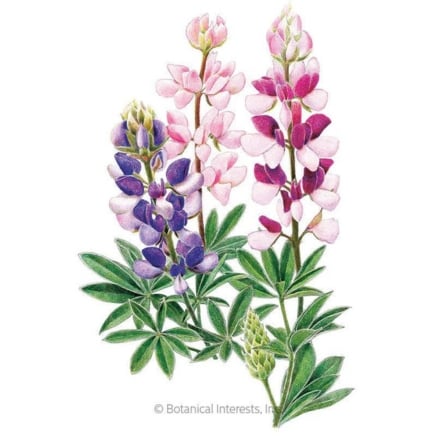
Pixie Delight Lupine Seeds
About Lupines
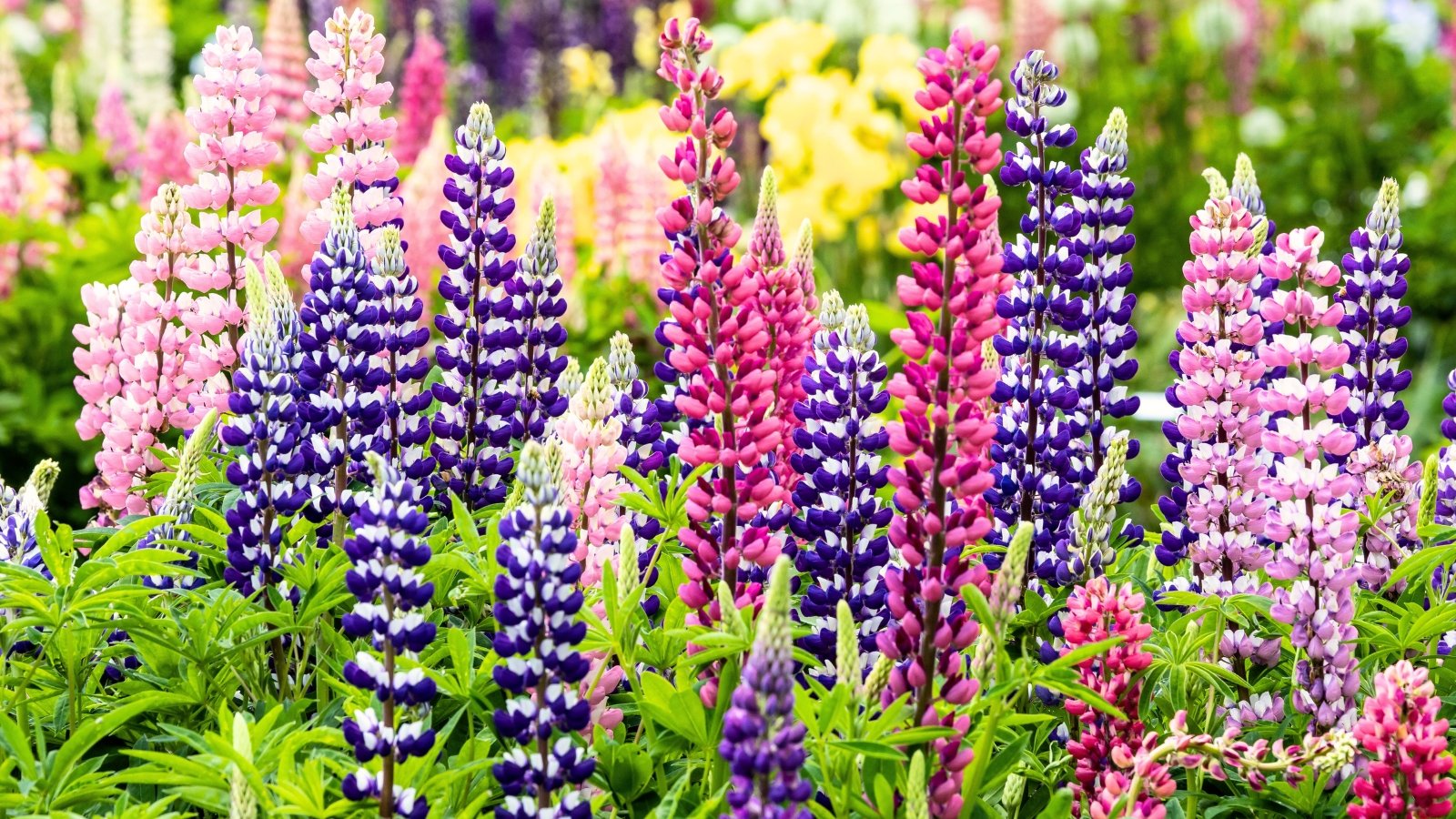 There are over 300 species, thriving from zones 3 through 8.
There are over 300 species, thriving from zones 3 through 8.The Lupinus genus holds over 300 species, with many native to North America and the Western region, in particular. Lupines are hardy in USDA growing zones 3-8, where they perform well in cool climates as short-lived perennials. They take time to establish, usually blooming in their second year, but often reseed once they do. With reseeding, successive colonies continue the color.
Optimal growing conditions for the rugged perennials include:
- Full sun to partial shade
- Consistently moist soils
- Coarse, loose soils with good aeration and drainage
- A mulch layer for added protection in cold winter climates
Species and Varieties
 From wild native species to well-bred ornamentals, this genus includes a vast array of colors and sizes.
From wild native species to well-bred ornamentals, this genus includes a vast array of colors and sizes.An eastern native species is Lupinus perennis, or wild lupine. It bears sky-blue flowers on multiple spikes. Flowers are often two-toned, lovely in purple and blue or blue and white. The attractive palmate leaves are handsome throughout the growing season.
Meadow lupine (Lupinus polyphyllus) is one of the showiest species with dense violet bloom spikes and a cushion of blue-green leaves. With vigorous growth and adaptability, it has invasive qualities outside its native Western range, particularly in the northeastern U.S. It can also cross-pollinate with L. perennis. In its Western native range, meadow lupine plays a vital role in erosion control, soil improvement, and pollinator resources.
Silky lupine, Lupinus sericeus, is another Western North American native that grows across a range of elevations and habitats, including grasslands, sagebrush meadows, forests, and steep slopes. Flowers are rich purple and striking among the gray-green leaves.
And then there are the beloved bluebonnets (L. texensis), the famed state flower of Texas. In spring, hillsides and fields take on a wave of blues.
In addition to the straight species are ornamental hybrids bred for performance, exceptional blooms, and the home garden. The Russell hybrids are a top-performing series with stout, upright, petal-packed stems and with reliable flowering. The favorites are an heirloom cross from 1937 and remain one of the best to grow from seed today. They stem from L. polyphyllus and are the parent to many modern cultivars.
How To Cut Back Lupines
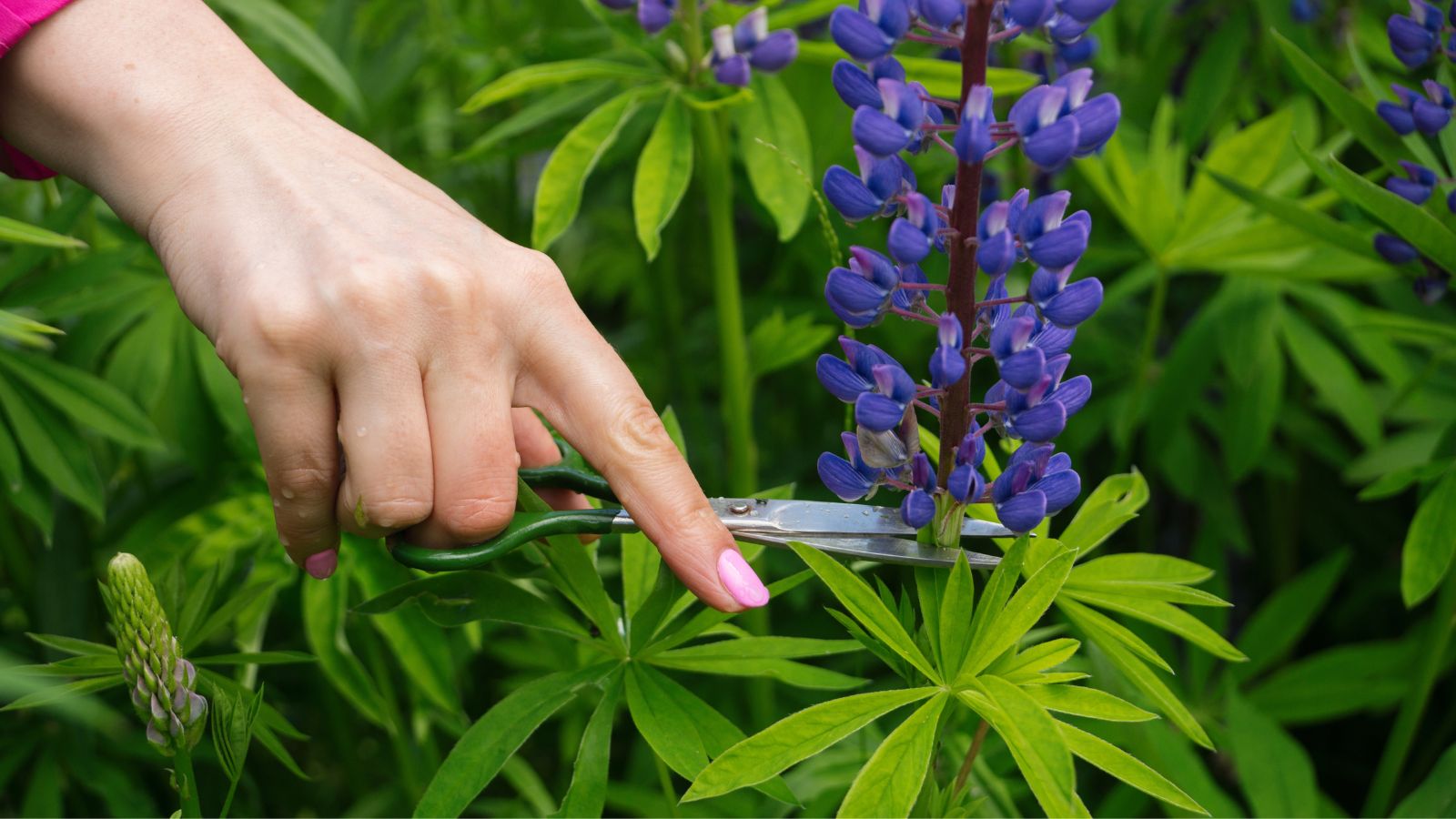 The plants are toxic for people or livestock to ingest.
The plants are toxic for people or livestock to ingest.Before diving into deadheading and seasonal lupine cutback, it’s important to note that some species contain toxic alkaloids. They’re toxic to people and animals when ingested in large quantities (a problem for livestock grazing in fields with lupines). The seed pods hold the highest concentration of toxins. Lupines don’t typically cause contact dermatitis, but gloves when pruning help those with sensitivities.
When pruning the perennials, use clean, sharp pruners. An alcohol wipe, dip, or spray with 70% isopropyl alcohol is helpful to have handy. Sanitizing helps reduce the spread of fungal spores between plants. Lupines are susceptible to several fungal problems, including powdery mildew and blight. Clip off diseased leaves anytime they crop up.
Make cuts at the base of the stem, an inch or two above ground level, whether pruning foliage or spent flower spikes.
Deadheading
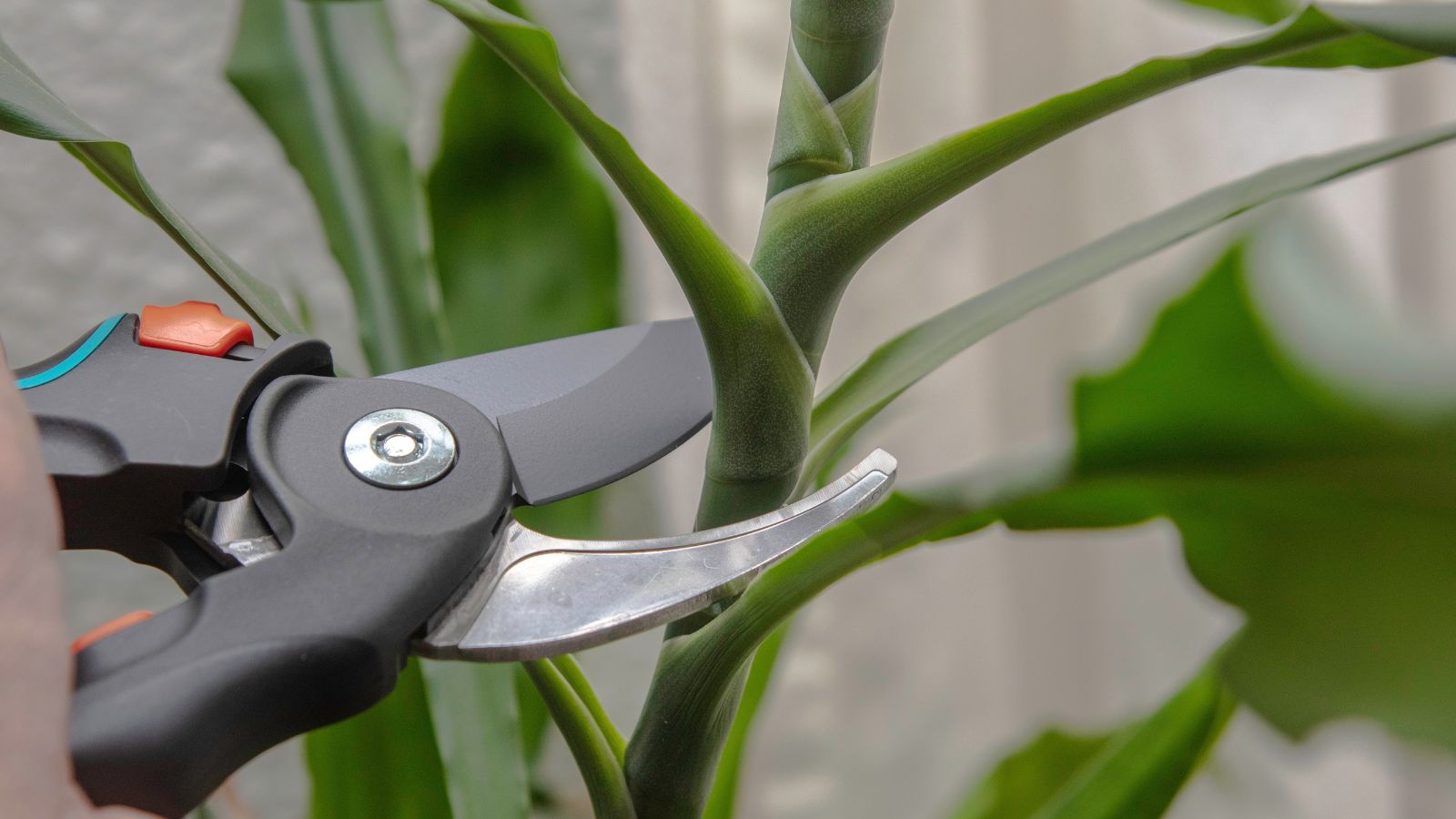 Be sure to remove spent blooms to enjoy a second flush of flowers.
Be sure to remove spent blooms to enjoy a second flush of flowers.When it comes to cutting back lupines, deadheading is one of the most valuable maintenance practices. We remove spent blooms for two reasons: to promote a second flush of flowering and prevent reseeding.
Lupines flower in a flush in spring and summer, with the timing depending on the variety and climate. After blooming, they produce seeds that ripen and dry for natural dispersal later in the season. With deadheading, it’s possible to get another round of color later in the season. Instead of directing energy into seed production, it goes into further flowering.
Reseeding
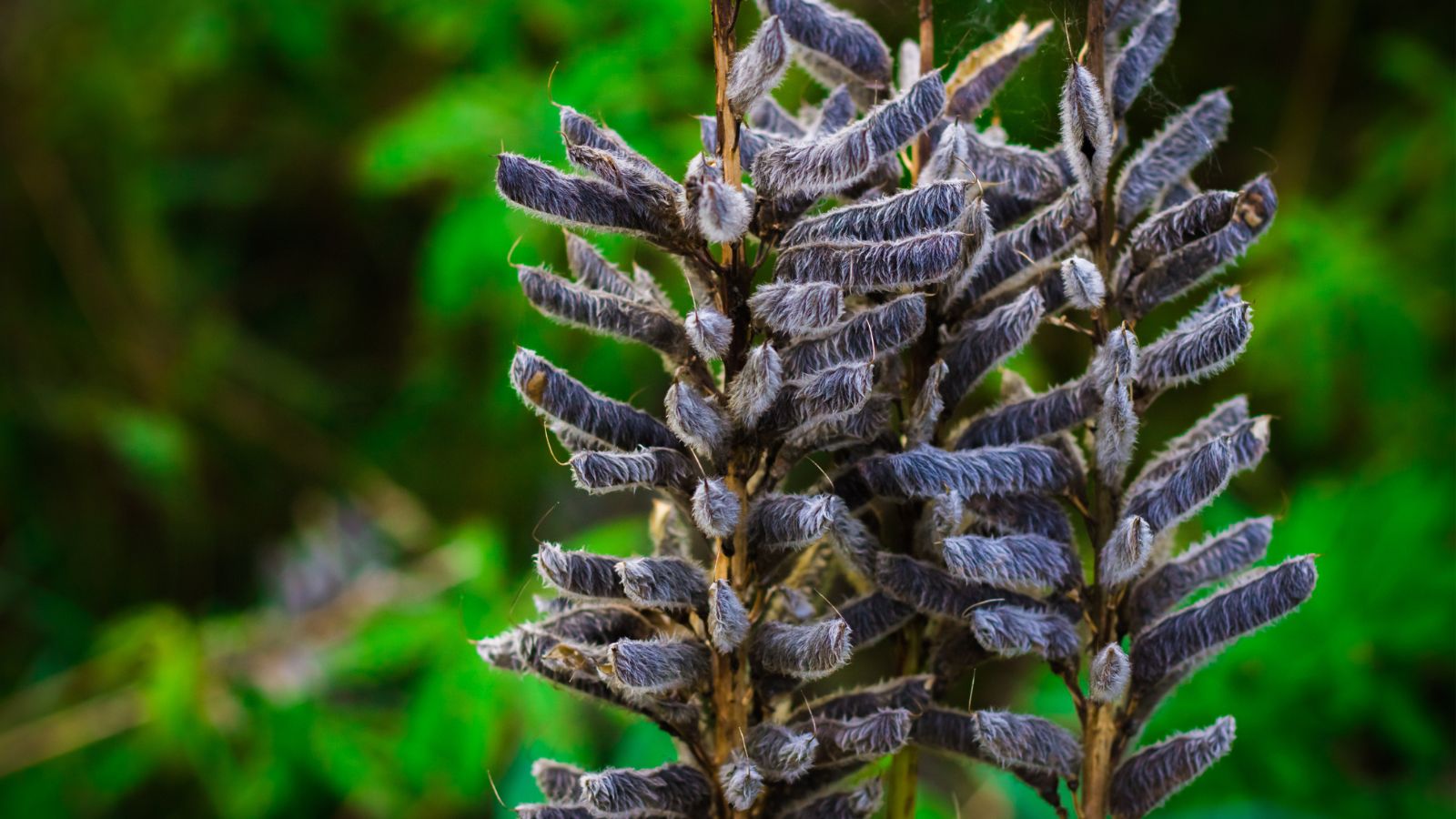 The leguminous pods will naturally drop their seeds if you don’t deadhead them.
The leguminous pods will naturally drop their seeds if you don’t deadhead them.Deadheading also serves to remove the ripening and drying seeds. If you don’t want natural reseeding, clip the stems before they go to seed, or while seedheads are green. They’ll be dry and brown when mature.
To promote reseeding, either leave all or some stems of the first flush or let late-season blooms go to seed. Deadheading in spring and letting fall stems go to seed is a happy compromise, both for more blooms and reseeding.
Why wouldn’t we want lupines to reseed? While lupine species are stable, their hybrids won’t come true to type from seed, meaning they won’t be a mirror of their parent plants. They may pop up in different colors for a surprise blend. And, they’ll grow where they land and germinate. If you don’t want surprises, want to limit the spread, control the placement, or have space constraints, reseeding may not be a fit. This is especially the case with L. polyphyllus and its cultivars outside of their native Western range, where limiting the spread helps keep the perennial in check.
Letting lupines go to seed is a benefit when:
- Growing species native to your region
- Promoting future seasons of color
- Collecting seeds
- Letting them self-sow for effortless propagation
- Infilling a wildflower, naturalized, meadow, or disturbed site
Winter Cutback
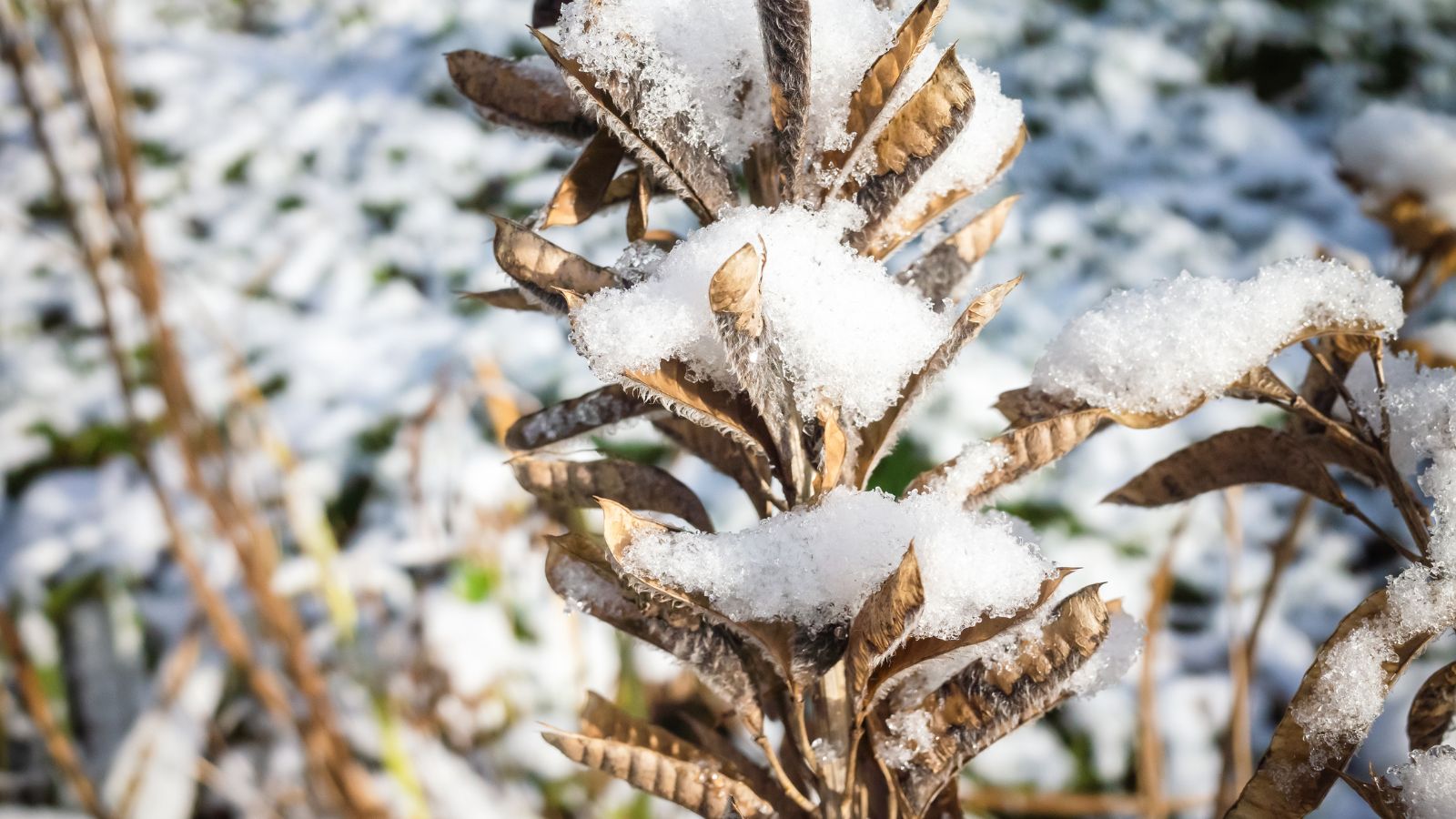 As an herbaceous perennial, it dies back to the ground level before winter.
As an herbaceous perennial, it dies back to the ground level before winter.Other than deadheading, the only major cutback lupines need is at the end of the season. After a few heavy fall frosts, the herbaceous perennial dies back to the ground. Foliage turns brown, shrivels, and dries.
To prevent harboring fungal spores like powdery mildew in plant debris, cut the brown basal foliage to within one to two inches of the crown. Remove the material to create a clean site and fresh foundation for the next round in spring. You can even mow lupines planted in a mass or meadow situation to prep the site for winter.
Collecting Seeds
 You can leave flowers to develop pea-like seed pods and collect seeds for replanting.
You can leave flowers to develop pea-like seed pods and collect seeds for replanting.If you skip deadheading in order to sow lupine seeds, look for the long pea-like seed pods to mature in mid-to-late summer. To collect seeds for sowing or storing, wait until they transition from green to gray-brown on the stem. Pick and snap the dry pods to easily expose the seeds. The easiest way to plant them is to direct sow in their new location.
Lupines develop strong taproots sensitive to transplant disturbance, and direct sowing avoids potential damage. The seeds also receive the cold stratification and scarification necessary for germination in the spring. You may not see blooms from the new generation until the second growing season, as they take time to develop sturdy roots and leafy growth.
In addition to direct sowing, you can store seeds for future sowing, starting indoors in soil blocks, or winter sowing.


 2 weeks ago
29
2 weeks ago
29





















 English (US) ·
English (US) ·  French (CA) ·
French (CA) ·